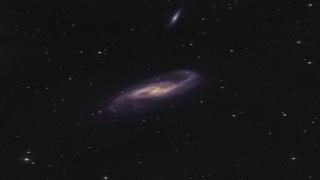Bibcode
Martín-Navarro, I.; Trujillo, I.; Knapen, J. H.; Bakos, J.; Fliri, J.
Bibliographical reference
Monthly Notices of the Royal Astronomical Society, Volume 441, Issue 4, p.2809-2814
Advertised on:
7
2014
Citations
27
Refereed citations
26
Description
The absence of stellar disc truncations in low-inclined spiral galaxies
has been a matter of debate in the last decade. Disc truncations are
often observed in highly inclined galaxies but no obvious detection of
this feature has so far been made in face-on spirals. Here we show,
using a simple exponential disc plus stellar halo model based on current
observational constraints, that truncations in face-on projections occur
at surface brightness levels comparable to the brightness of stellar
haloes at the same radial distance. In this sense, stellar haloes
outshine the galaxy disc at the expected position of the truncations,
forcing their studies only in highly inclined (edge-on) orientations.
Related projects

Traces of Galaxy Formation: Stellar populations, Dynamics and Morphology
We are a large, diverse, and very active research group aiming to provide a comprehensive picture for the formation of galaxies in the Universe. Rooted in detailed stellar population analysis, we are constantly exploring and developing new tools and ideas to understand how galaxies came to be what we now observe.
Anna
Ferré Mateu

Spiral Galaxies: Evolution and Consequences
Our small group is well known and respected internationally for our innovative and important work on various aspects of the structure and evolution of nearby spiral galaxies. We primarily use observations at various wavelengths, exploiting synergies that allow us to answer the most pertinent questions relating to what the main properties of
Johan Hendrik
Knapen Koelstra